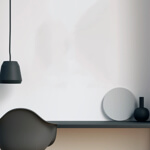Memento Mori: A German 17th-century Vanitas Study of a Skull, ca. 1600
This fine study of a skull once adorned the walls of the Geneva home of the famous French singer and actress Marie Laforêt, whose collection contained several vanitas works. A work inviting contemplation, befitting a woman who considered joining a nunnery before she became a famous star.
"Memento mori" - "Remember that you [have to] die". So goes the saying, which has been repeated and rephrased in one form or another since antiquity, from the Stoics to Camus and Sartre. Epictetus (1st-2nd c. AD) told his studens to remind themselves they were mortal; the Christian writer Tertullian (2nd c. AD) wrote - perhaps apocryphically - that in victorious processions a slave stood behind the Imperator, whispering "Respice post te. Hominem te memento." ("Look behind you [to the time after your death] and remember you're [only] a man.") into the victor's ear.
With the ascent of Christianity in Europe, and its emphasis on heaven, hell and salvation, the expression memento mori - a moralizing counterpart to the more hedonistic nunc est bibendum of classical antiquity - came into use. As earthly pleasures and achievements are but empty and fleeting, better to focus on the afterlife and one's immortal soul.
Memento mori soon became an important topos in sculpture and painting, with so-called vanitas (from the Latin vanus, "empty") artworks symbolizing the transience of life and the certainty of death quickly appearing in tombs and churches. Throughout the middle ages and the renaissance the genre was mostly confined to funerary monuments; from the sixteenth century onwards however, vanity art started to appear in private homes as well. It took, for example, the form of vanitas still lifes: paintings juxtaposing ephemeral things such as wealth and beauty with the certainty of decay and death.
The present work, a study of a skull, was certainly intended for private use. The skull symbolized the certainty of death, although there was of course also an aesthetic and decorative element to objects like these.
Provenance
(Possibly) Fountaine Collection, Narford Hall;
Collection Marie Laforêt, Geneva.


